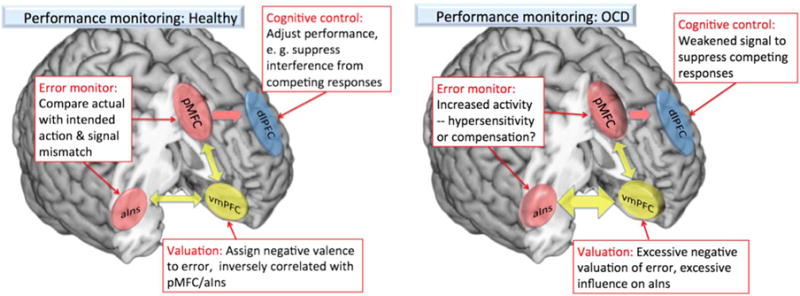FIGURE 1.

Schematic illustration of performance monitoring and proposed disruptions in OCD. (A) In healthy subjects, components of the performance monitoring network include the pMFC working in concert with the anterior insula (aIns) to monitor behavior and detect mismatches (errors), and then send a signal to the dlPFC, which increases control to suppress unwanted interference and improve performance. The vmPFC, which typically deactivates during tasks that require an external focus of attention, also modulates activity in the pMFC and aIns, possibly to provide a signal that determines the value of a task and a subsequent error. (B) In OCD, evidence suggests that several of these components are disrupted (although results in children and adults differ slightly). Activity is increased in the monitoring nodes (pMFC and anterior insula, aIns), and the connection between the vmPFC and aIns is increased, which may signal the greater negative valuation that OCD patients place on errors. Other disrupted nodes may include the pMFC-dlPFC connection, and a weakened ability to overcome interfering activity from valuation centers that drive compulsive behaviors.
